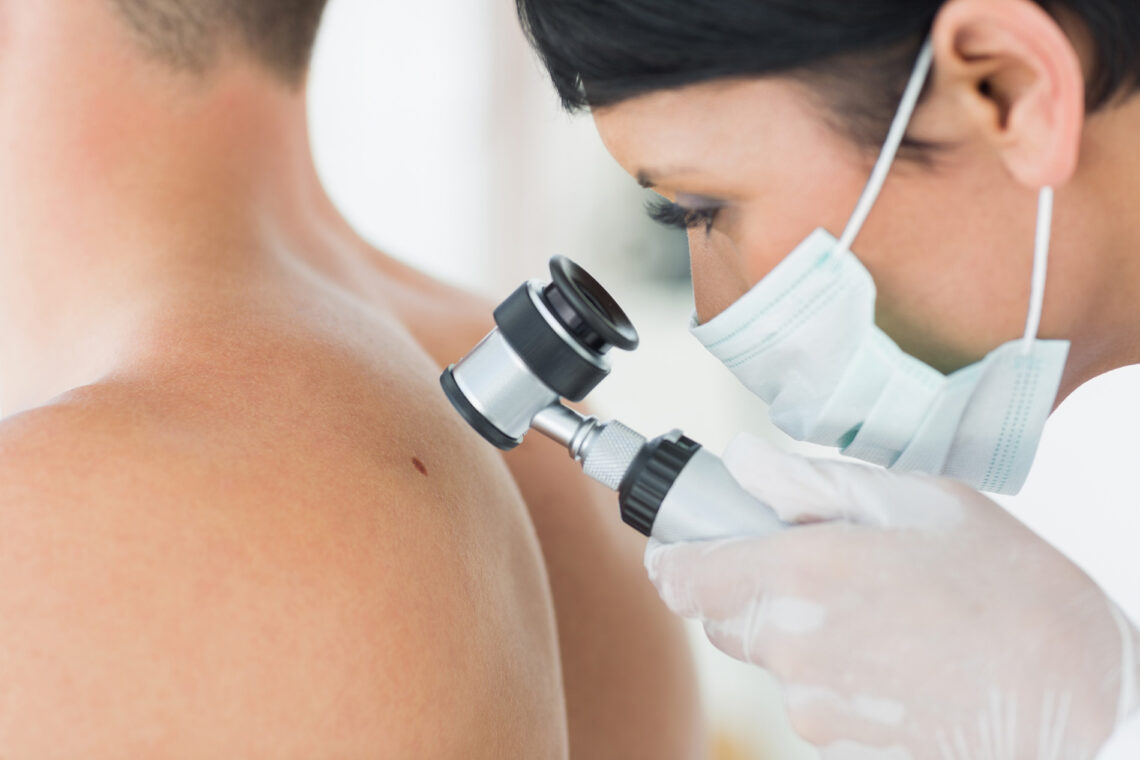The Function of a Dermatologist in Detecting and Treating Numerous Skin Conditions
The function of a skin doctor prolongs much beyond basic skin treatment; it includes the detailed procedures of detecting and treating a vast variety of skin conditions. The complexity of skin conditions usually requires a complex method that includes not only medical treatments yet also client education and learning and preventative techniques.
Relevance of Skin-related Competence
The experience of skin specialists is critical in the diagnosis and management of skin disorders, as they have specialized expertise that extends beyond general medical training. This innovative understanding is necessary for accurately determining a vast array of skin problem, which often present with overlapping signs and symptoms that can puzzle non-specialist practitioners. Dermatologists are trained to separate in between numerous skin conditions, ensuring ideal therapy strategies are applied swiftly.
Furthermore, the area of dermatology incorporates a distinct combination of clinical abilities and sophisticated modern technology. Skin doctors utilize innovative diagnostic tools, such as dermatoscopes and skin biopsies, to evaluate skin lesions and identify their nature. This technological proficiency enables early discovery of potentially significant problems, including skin cancers, which can substantially boost individual outcomes.

Common Skin Conditions Diagnosed
Many skin conditions can provide with varying degrees of extent and intricacy, making dermatological know-how crucial for precise medical diagnosis and management. Among one of the most common problems are acne vulgaris, psoriasis, dermatitis, and dermatitis.
Acne vulgaris, identified by the visibility of pustules, papules, and comedones, primarily impacts teenagers but can persist right into their adult years. Dermatitis, or atopic dermatitis, is a chronic inflammatory condition that causes completely dry, scratchy, and inflamed skin. Psoriasis is an autoimmune condition that materializes as red, scaly plaques, primarily on extensor surface areas, and can dramatically affect the lifestyle.
Various other usual disorders consist of rosacea, which provides with face flushing and noticeable capillary, and seborrheic dermatitis, typically causing dandruff and oily patches on the scalp. Fungal infections, such as tinea pedis (athlete's foot) and tinea corporis (ringworm), are additionally regularly encountered.
These varied problems need a detailed understanding of pathophysiology, along with expertise of therapeutic choices, to assist reliable therapy techniques - Dermatologist Raleigh NC. With accurate diagnosis, dermatologists can give tailored monitoring plans that address both the signs and underlying root causes of these common skin problems
Analysis Strategies Made Use Of
Exactly how do skin doctors precisely identify different skin problems? Skin specialists use a mix of medical examinations, analysis tools, and specialized methods to make certain exact recognition of skin disease. The initial step commonly involves an extensive case history and physical exam. During this procedure, skin specialists assess the person's signs and symptoms, beginning, duration, and any kind of prospective triggers.
One of the primary analysis methods is dermoscopy, which uses a handheld device to amplify skin lesions, permitting thorough examination of frameworks not noticeable to the nude eye. Furthermore, skin biopsies are regularly performed, wherein a tiny example of skin is eliminated for histopathological analysis. This method is very useful for identifying conditions such as melanoma and various other skin cancers cells.
Spot testing is another crucial technique utilized to recognize contact dermatitis by revealing percentages of prospective allergens to the skin. Furthermore, laboratory tests, consisting of blood tests and societies, might be performed to dismiss systemic concerns or infections. Collectively, these analysis methods enable skin specialists to develop a detailed understanding of skin disorders, causing accurate medical diagnoses and notified client management.

Treatment Alternatives Readily Available
A large range of treatment alternatives is readily available for i loved this managing skin disorders, customized to the particular problem and private client requirements. Dermatologists employ both systemic and topical treatments, depending on the seriousness and kind of skin problem.
For much more serious problems, systemic therapies may be required. These include oral medications such as antibiotics for bacterial infections and immunosuppressants for autoimmune problems. Biologics, a more recent class of medications, have shown effectiveness in dealing with chronic inflammatory conditions like psoriasis and atopic dermatitis.
In addition to pharmacologic treatments, dermatologists may recommend procedural options such as laser treatment, chemical, or phototherapy peels (Dermatologist Raleigh NC). These procedures can deal with coloring concerns, acne scarring, and other skin abnormalities effectively
Furthermore, lifestyle modifications, consisting of appropriate skin care regimens and sunlight protection, play a critical duty in the general administration of skin disorders. By incorporating these therapy techniques, skin doctors aim to improve person end results and enhance high quality of life for those influenced by skin conditions.
Client Education and Support
Empowerment through knowledge is crucial in the management of skin problems, as patient education and learning and support significantly influence treatment results. Skin specialists play an essential duty in offering people with comprehensive details concerning their conditions, treatment options, and self-care methods. Reliable interaction fosters a collaborative environment where clients can actively join their very own treatment.

Assistance prolongs past education and learning; it includes emotional reassurance and recurring inspiration. Skin doctors need to develop a safe area for people to express their concerns and ask questions. Resources such as educational handouts, internet sites, and assistance teams can even more empower clients, allowing them to get in touch with others facing comparable obstacles.
Eventually, an educated patient is most likely to engage in their therapy trip, leading to better adherence, satisfaction, and enhanced health and wellness results. The skin specialist's function in patient education and support is fundamental to maximizing the administration of skin disorders.
Conclusion
To conclude, skin doctors play an essential role in the effective diagnosis and treatment of a variety of skin disorders. Their customized experience, combined with advanced diagnostic techniques and tailored treatment plans, makes certain comprehensive look after individuals. The focus on client education and learning cultivates proactive monitoring of skin wellness, encouraging people to take educated activities regarding their skin care regimens. The contributions of dermatologists dramatically improve the lifestyle for those impacted by skin problems.
The role of a dermatologist expands much past fundamental skin treatment; it includes the intricate procedures of identifying and dealing with a large array of skin problems. Skin doctors utilize sophisticated diagnostic tools, such as official statement dermatoscopes and skin biopsies, to evaluate skin sores and determine their nature. Inevitably, the specialized training and experience of dermatologists are crucial in supplying thorough care for patients with skin disorders.
Additionally, skin biopsies are often carried out, where a little sample of skin is gotten rid of for histopathological evaluation. Jointly, these diagnostic strategies allow dermatologists to formulate a detailed understanding of skin disorders, leading to precise diagnoses and informed client monitoring.